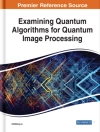This book presents the state-of-the-art in the emerging field of data science and includes models for layered security with applications in the protection of sites—such as large gathering places—through high-stake decision-making tasks. Such tasks include cancer diagnostics, self-driving cars, and others where wrong decisions can possibly have catastrophic consequences. Additionally, this book provides readers with automated methods to analyze patterns and models for various types of data, with applications ranging from scientific discovery to business intelligence and analytics.
The book primarily includes exploratory data analysis, pattern mining, clustering, and classification supported by real life case studies. The statistical section of this book explores the impact of data mining and modeling on the predictability assessment of time series. Further new notions of mean values based on ideas of multi-criteria optimization are compared with their conventional definitions, leading to new algorithmic approaches to the calculation of the suggested new means.
The style of the written chapters and the provision of a broad yet in-depth overview of data mining, integrating novel concepts from machine learning and statistics, make the book accessible to upper level undergraduate and graduate students in data mining courses. Students and professionals specializing in computer and management science, data mining for high-dimensional data, complex graphs and networks will benefit from the cutting-edge ideas and practically motivated case studies in this book.
Tabella dei contenuti
Preface and Book of Abstracts.- Chapter. 1. Optimal Layered Defense for Site Protection.- Chapter. 2. SARAH-based Variance-reduced Algorithm for Stochastic Finite-sum Cocoercive Variational Inequalities.- Chapter. 3. Dimensionality reduction using pseudo-Boolean polynomials for cluster analysis.- Chapter. 4. Pseudo-Boolean polynomials approach to edge detection and image segmentation.- Chapter. 5. Purifying Data by Machine Learning with Certainty Levels.- Chapter. 6. On impact of data models on predictability assessment of time series.- Chapter. 7. A three-step method for audience extension in Internet advertising using an industrial taxonomy.- Chapter. 8. From Prebase in Automata Theory to Data Analysis: Boris Mirkin’s Way.- Chapter. 9. Manipulability of aggregation procedures for the case of large numbers of voters.- Chapter. 10. Preferences over mixed manna.- Chapter. 11. About Some Clustering Algorithms in Evidence Theory.- Chapter.12. Inferring Multiple Consensus Trees and Supertrees Using Clustering: A Review.- Chapter. 13. Anomaly Detection With Neural Network Using a Generator.- Chapter. 14. Controllability of triangular systems with phase space change.- Chapter. 15. A Parallel Linear Active Set Method.- Chapter. 16. Mean Values: A Multicriterial Analysis.- Chapter. 17. Data and Text Interpretation in Social Media: Urban Planning Conflicts.- Chapter. 18. Visual Explainable Machine Learning for High-Stake Decision-Making with Worst Case Estimates.- Chapter. 19. Algorithm of trading on the stock market, providing satisfactory results.- Chapter. 20. Classification using Marginalized Maximum Likelihood Estimation and Black-Box Variational Inference.- Chapter. 21. Generating Genomic Maps of Z-DNA with the Transformer Algorithm.- Chapter. 22. Manipulation by Coalitions in Voting with Incomplete Information.- Chapter. 23. Rethinking Probabilistic Topic Modeling from the Point of View of Classical Non-Bayesian Regularization.
< p=”>
^Circa l’autore
Boris Goldengorin is the author and inventor of data correcting and tolerance based algorithms applied to many problems in operations research, supply chain management, quantitative logistics, industrial engineering, data and stock market analysis. Boris is the author of more than 100 articles published in leading international journals, including the Journal of Algebraic Combinatorics, Discrete Optimization, Journal of Combinatorial Optimization, Journal of Global Optimization, Operations Research, Management Science, European Journal of Operational Research, Journal of Operational Research Society, Mathematical and Computer Modelling, Computers & Operations Research, Computers & Industrial Engineering, Expert Systems with Applications, Journal of Heuristics, Optimization Methods & Software, Computational Management Science, and many others. Dr. Goldengorin has published four monographs, three textbooks and an editor of five books on mathematical programming, game theory, combinatorial optimization, network analysis algorithms, graph theory, and big data analysis.
He is an associate editor of Journal of Global Optimization, Journal of Combinatorial Optimization, SN Operations Research Forum and member of the Editorial Board of the Journal of Computational and Applied Mathematics of the National University. T. G. Shevchenko, Ukraine.
Professor Sergei O. Kuznetsov graduated from the Faculty of Applied Mathematics and Control of the Moscow Institute for Physics and Technology in 1985. He obtained his Doctor of Science Degree in Theoretical Computer Science at the Computing Center of Russian Academy of Science. Since 2006 the Head of Department for Data Analysis and Artificial Intelligence, Head of the International Laboratory for Intelligent Systems and Structural Analysis and Academic Supervisor of the Data Science master program at National Research University Higher School of Economics (Moscow). His researchinterests are in the algorithms of data mining, knowledge discovery, and Formal Concept Analysis.












